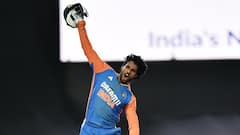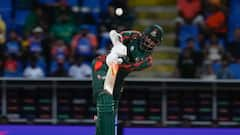Explorer
Advertisement
Long Standing Hegemony Of Few Nations Detrimental To Test Cricket's Fortunes
While the advent of newly conceptualized ICC World Test Championship which envisages a more competitive and balanced cricket structure, it also calls upon nations to step up their game to be real competitors at the Test level.

After Australia's stranglehold in Test Cricket for more than a decade, the longer format of the 'Gentleman's Game' over the past five odd seasons has distinctly become two fold. They are two clear cut divisions in top flight cricket with India, England, Australia and New Zealand deep trenched in a never ending battle to conquer the coveted 'Numero Uno' spot in red ball cricket.
South Africa which for long belonged to the dominant Test group is in danger of drifting into the lower half courtesy a spell of poor results against Sri Lanka at home and a dominant Indian team in their backyard.
The bottom half can at best be termed as the 'Strugglers' where Pakistan, Sri Lanka and the West Indies don't seem to have the requisite ammunition to compete and challenge the top guns in the highly competitive Test cricket arena. What makes the situation even more alarming is Zimbabwe barely surviving in the elite Test club courtesy a never ending dispute between players and the board.
Bangladesh have surely emerged out its minnows status but still are far from being a serious force to reckon in the longer format. The only bright picture seems the meteoric rise of Afghanistan in red ball cricket. However, even their pedigree will be tested in full measures when they regularly play against the top guns, both home and away.
Since the inception of the ICC Test Championships way back in 2003, only four nations have been dominant at the very top in the longer format; namely -
Australia, India, South Africa and England.
ICC Team Rankings (Total Weeks Spent At Number One)
Australia - 83
India - 58*
South Africa - 42
England - 12
The extended periods of dominance by Aussies, English or the Indians in Test cricket is a true reflection of the hegemony of 2 or 3 teams, which needs to be far penetrative more for the betterment of the game.
The results of some of the bilateral series are forgone conclusions with the 'Top Four' inflicting series whitewashes over the lesser rungs. Innings defeats in 3-4 days are becoming the order of the day for the poor overseas travelers against formidable teams in their den.
With the exception of The Ashes , India-Australia (Border Gavaskar Trophy) , Australia -New Zealand (Chapell Hadlee Series) , England vs India and South Africa's home series, Test cricket has been drawing very few spectators to the stadiums and poor viewership on the television.
There are reasons a plenty for the prolonged stagnant run of quite a few of the Test teams. The domestic structures in these nations are not breeding the talent which is required to compete at the highest level.
Lack of a core nucleus, absence of strong leadership, on and off player-board disputes, difficulty in adapting to overseas conditions and too much emphasis on the shorter formats have been the prime reasons behind the below par performances by in the longer formats.
While the Pakis, Windies and Lankans have been able to turn out quality strokemakers and exponents with the ball in white ball cricket, they have been found wanting in producing players with the temperament, skill-set, composure and mental fortitude to excel in the grinding format of Test cricket.
It is always a battle of attrition with every passing generation being replaced by noteworthy successors to carry on the mantle of glorious past and promising future.
Teams which are ready to cope up with this perennial change are the ones who are consistently maintaining their dominance in the top half of the pie. India, Australia and England have been beneficiaries of a competitive and well laid out first class structure.
With West Indies showing no signs of Test revival; Sri Lanka, Pakistan and now the South Africa finding it tough to stay competitive after the retirement of many of their stalwarts, the situation remains bleak and far from improving.
The battle to reign supreme in 'purist form' of the game cannot just confined between 3-4 of the top Test playing nations. For cricket to establish itself as a global sport and be in the league of major Olympic sports, the game needs to be competitive among all the Test playing nation.
While the advent of newly conceptualized ICC World Test Championship which envisages a more competitive and balanced cricket structure, it also calls upon nations to step up their game to be real competitors at the Test level.
Follow Sports News on ABP Live for more latest stories and trending topics. Watch breaking news and top headlines online on ABP News LIVE TV
View More
Advertisement
Advertisement
Advertisement
Top Headlines
World
Election 2024
India
World
Advertisement
Trending News


Lakshmana Venkat Kuchi
Opinion


































